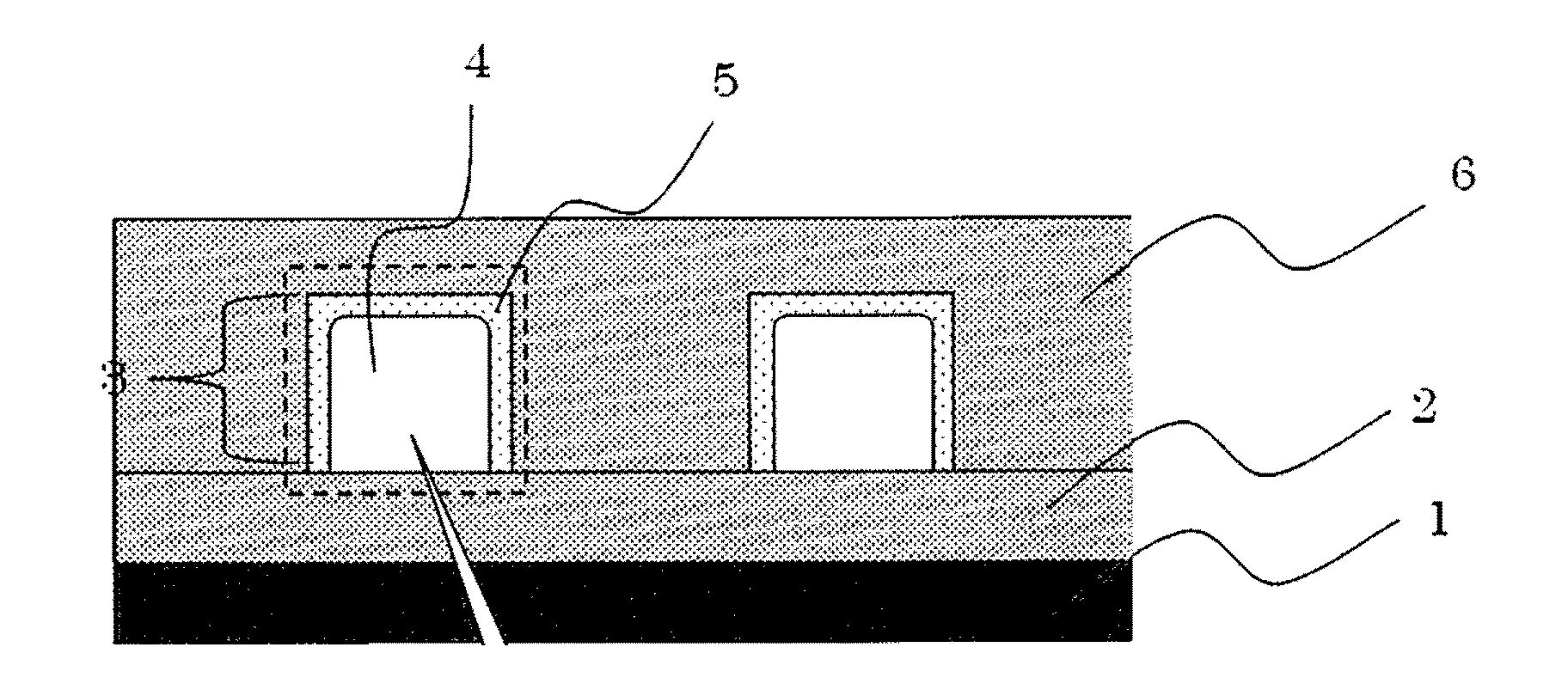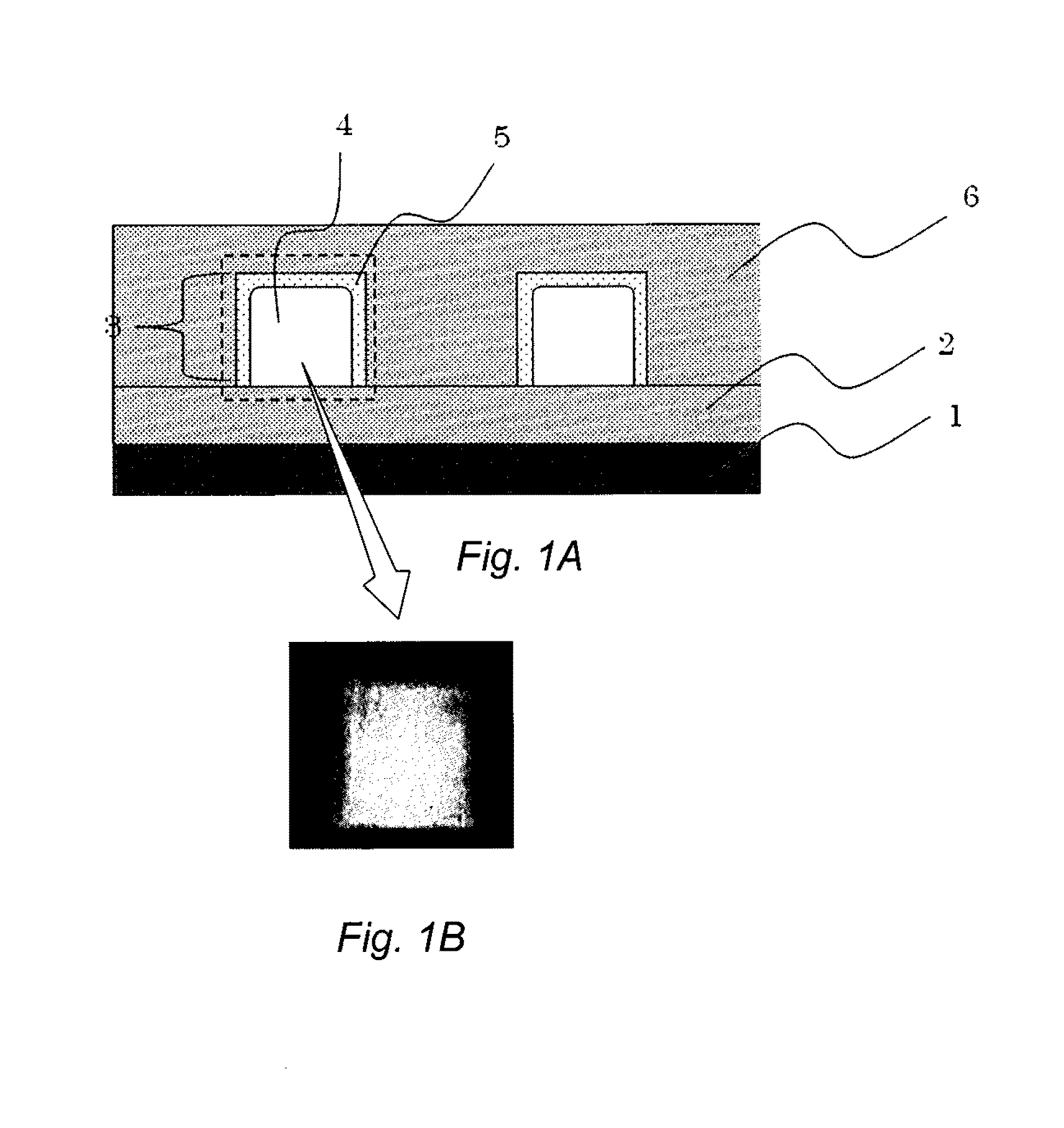Method for manufacturing optical member, and optical member, transparent member for forming optical member, optical waveguide and optical module
- Summary
- Abstract
- Description
- Claims
- Application Information
AI Technical Summary
Benefits of technology
Problems solved by technology
Method used
Image
Examples
embodiment 1
Preparation of Resin Film for Forming Transparent Member
[0177][Preparation of Base Polymer: (Meth)acrylic Polymer (P-1) for forming Transparent Member]
[0178]42 parts by weight of propylene glycol monomethyl ether acetate and 21 parts by weight of methyl lactate were weighed and put in a flask equipped with a stirrer, a cooling tube, a gas-introduction tube, a dripping funnel, and a thermometer; then they were stirred while introducing nitrogen gas. The temperature of the liquid was risen to 65° C. and then a mix was dripped over a period of three hours.
[0179]The mix dripped was a blend of 14.5 parts by weight of N-cyclohexyl maleimide, 20 parts by weight of benzyl acrylate, 1.5 parts by weight of o-phenylphenol, 39 parts by weight of acrylate, 14 parts by weight of 2-hydroxyethyl methacrylate, 12.5 parts by weight of methacrylic acid, 4 parts by weight of 2,2′-azobis(2,4-dimethyl valeronitrile), 37 parts by weight of propylene glycol monoethyl ether acetate, and 21 parts by weight o...
embodiment 2
[0194]Another optical member was manufactured in the same manner employed in the embodiment 1, except that the 1.0 wt-% of sodium carbonate aqueous solution was used in place of 1.0 wt-% of potassium carbonate aqueous solution in the embodiment 1.
[0195]The refractive index at the wavelength 830 nm of the supporting film side (the side immersed in the sodium carbonate aqueous solution) of this optical member was measured using a prism-coupled refractometer (Model 2020, by Metricon Co.) The measured refractive index was 1.556. The refractive index was further measured at arbitrary chosen 20 places (the separations between each adjacent places were about one centimeter). The measured refractive indices showed no position-dependent variations. The IR measuring was conducted about the surface; carboxylic anion peak was observed. The EDX measuring was also conducted; sodium was detected. The refraction index of the protection film side (the side not immersed in the sodium carbonate aqueou...
embodiment 3
Preparation of Resin Film for Forming Clad Layer
[Preparation of Base Polymer (A): (Meth)Acrylate Polymer (A-1)]
[0197]46 parts by weight of propylene glycol monomethyl ether acetate and 23 parts by weight of methyl lactate were weighed and put in a flask equipped with a stirrer, a cooling tube, a gas-introduction tube, a dripping funnel, and a thermometer; then they were stirred while introducing nitrogen gas. The temperature of the liquid was risen to 65° C. and then a mix was dripped over a period of three hours.
[0198]The mix dripped was a blend of 47 parts by weight of methyl methacrylate, 33 parts by weight of butyl acrylate, 16 parts by weight of 2-hydroxyethyl methacrylate, 14 parts by weight of methacrylic acid, 3 parts by weight of 2,2′-azobis(2,4-dimethyl valeronitrile), 46 parts by weight of propylene glycol monomethyl ether acetate, and 23 parts by weight of methyl lactate.
[0199]After the three hours of dripping, it was stirred for three hours at 65° C. The stirring was fu...
PUM
| Property | Measurement | Unit |
|---|---|---|
| Transparency | aaaaa | aaaaa |
| Circumference | aaaaa | aaaaa |
| Distribution | aaaaa | aaaaa |
Abstract
Description
Claims
Application Information
 Login to View More
Login to View More - R&D
- Intellectual Property
- Life Sciences
- Materials
- Tech Scout
- Unparalleled Data Quality
- Higher Quality Content
- 60% Fewer Hallucinations
Browse by: Latest US Patents, China's latest patents, Technical Efficacy Thesaurus, Application Domain, Technology Topic, Popular Technical Reports.
© 2025 PatSnap. All rights reserved.Legal|Privacy policy|Modern Slavery Act Transparency Statement|Sitemap|About US| Contact US: help@patsnap.com



